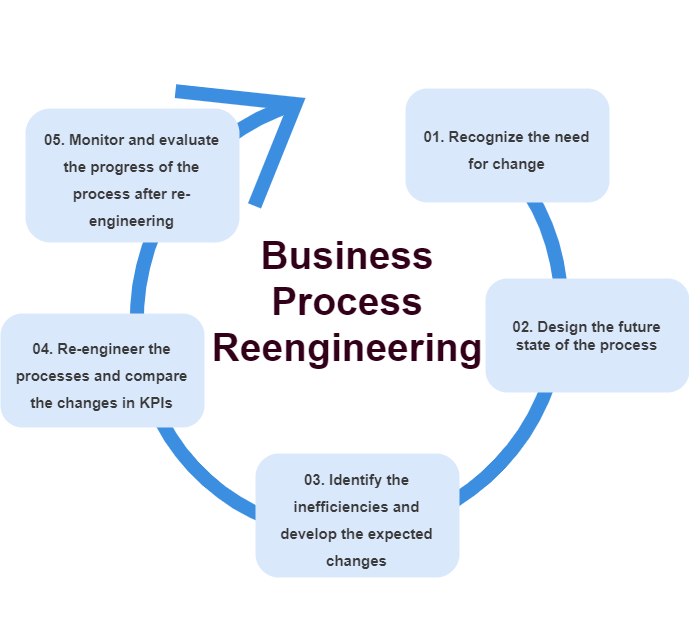
Business Process Re-engineering (BPR) is one of the most important topics in modern business restructuring.
Re-engineering is about redesigning something with the aim of creating a better outcome. This is an evolving concept in the modern business world. Business process reengineering is a procedure. It recreates core business processes. This is done with the aim of creating a better outcome in terms of product development. Apart from that, quality improvement or cost reduction is also a concern. This involves the analysis of the current business procedures. Recognizing the areas of business that require improvement is a major part of this. By finding the best possible option the organization expects to improve business productivity. They intend to implement and monitor the growth of the process.
The concept of Business Process Re-engineering evolved in the business world in the 1990s. It evolved based on an article published in Harvard Business Review by Michael Hammer. The concept was developed over time. Now it has become one of the key development trends in modern businesses.
Business Process Re-engineering is not a single task. It is a process of change from the current level of the business to a future level. this will help to achieve a better outcome.
The basic stages of the BPR process can be identified as below.
01. Recognize the need for change
The initial step of Business process re-engineering is to identify the areas of an organization where the change is necessary. This is the most difficult and time-consuming task. It is important to identify the weak areas in the process of business that require change. This can be recognized by analyzing organizational data throughout the period. Apart from that, the organization can evaluate organizational details in all the necessary aspects.
02. Design the future state of the process
This involves the identification of the status the organization is planning to achieve in the future. The organization should decide what they want to achieve by the end of the business process re-engineering process.
03. Identify the inefficiencies and develop the expected changes
The organization should compare the current state and the planned future state. This should be done throughout the process. This will help to identify the gap between the current situation and the expectation. The organization should plan and develop properly. This is the ideal method of changing the business process. A key point to remember is the necessity of establishing practical plans. The organization should consider the capabilities of the employees as a priority. In addition, internal and external organizational environment. The feasibility of implementing the process to achieve the expected status should be considered. This should happen within an estimated time.
04. Re-engineer the processes and compare the changes in KPIs
After planning and developing the necessary changes to the process, the organization should implement the planned changes. While implementing, the changes in the organizational Key Performance Indicators due to the exercised plan should be measured.
05. Monitor and evaluate the progress of the process after re-engineering
At this stage, the organization should monitor and evaluate the progress of the process. This will help to make sure the achievement of the estimated level of outcome. If the organization has achieved the desired level of progress, the re-engineering process is a success. The organization has to make sure that they have put together the right team for the business reengineering process.
All five steps mentioned above are equally important for the success of the process. The organization should have a set of skilled employees. They should be capable of making the correct decision. They should have the best analytical abilities. They should be capable of surviving drastic changes. Apart from that, they should be capable of making the maximum use of the available resources for the betterment of the process.
In conclusion, Business Process Re-engineering (BPR) is a concept that needs a tremendous effort. But it has the ability to turn a business a huge success if implemented correctly.
